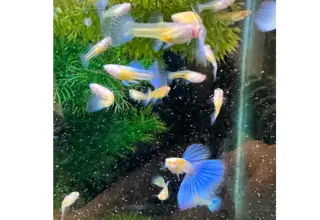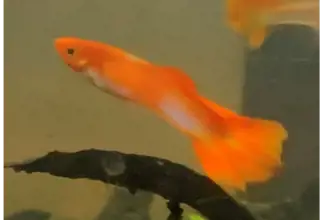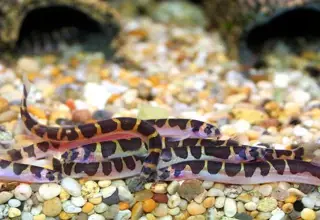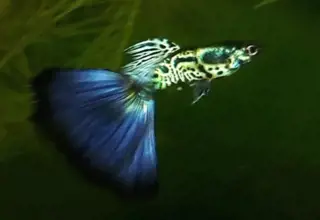Guppy pH Levels: Recommended Ranges, How to Raise, Lower & More
Posted by on 02/26/2023
We use affiliate links and may receive a small commission on purchases.
Guppies are considered to be one of the world's most widely distributed fish and are easily one of the most popular in the freshwater aquarium hobby.
Some hobbyists will be surprised to know that these fish are not exclusive to freshwater environments. They can live comfortably in both brackish and saltwater conditions, making a good understanding of their pH requirements all the more important. In this post, we'll discuss the recommended pH ranges for guppies, how to raise & lower them, and provide recommendations on testing kits you can use to dial in your pH levels.
January's Giveaways on Light Fish
Table of Contents
pH: What Exactly Is It?
pH, short for Potential of Hydrogen, is a logarithmic measurement used to determine the concentration of ions in a solution. pH is represented on a 14-point scale, where values below 7 are considered acidic, 7 is considered neutral, and above 7 is considered alkaline. These values can be tested by using a reliable testing kit.
When it comes to freshwater fish such as guppies, changes in pH can have significant effects on their health and well-being. Extremely high levels of pH can result in alkalosis, a disease in which fish demonstrate lethargy and erratic swimming behavior. Low levels of pH can reduce a fish's ability to extract oxygen from the water, weakening its immune system, and making them susceptible to diseases.
For these reasons, having a stable pH that's within recommended ranges is incredibly important for the health of your livestock.
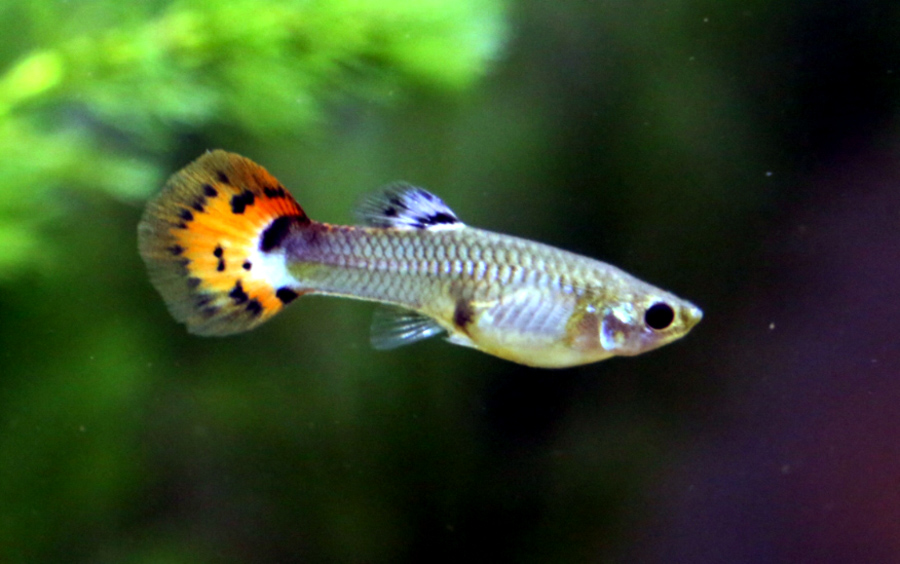
Guppy pH Levels
Guppies (scientific name: Poecilia reticulata) are native to the northeastern part of South America and can be found in the rivers of the Amazon, Guayana, Trinidad and Tobago, and Venezuela. However, they've since been introduced to several new environments and exist on every continent except for Antarctica.
The tropical waters which contain these fish are known to be quite acidic (pH ranges in the Amazon can range from 4.1-4.9), but in many cases, guppies can be found in brackish conditions (locations where both fresh and seawater mix.) pH ranges in brackish waters can range from 6 to 9.
Now that we've discovered the wide range of pH levels that can sustain guppies, we'll need to re-create these conditions in our home aquariums.
🛒 Shop Freshwater Fish on Light Fish
Recommended Ranges
The best pH range for guppies is between 7-8 pH.
A pH range between 7-8 is similar to the brackish conditions where many of these fish are found in the wild.
However, as we've previously mentioned, guppies are extremely adaptable. If your tap water is a bit on the hard side (a pH reading between 8-9) or maybe you have well water that's a bit more acidic (a pH reading < 7) you can still successfully keep guppy fish.
The key is transition time. Always make pH adjustments slowly - aim for about .5 degrees of pH change per day.
How to Lower pH
If you have high levels of pH, and you need to lower the levels a bit for your guppies, you have a few methods at your disposal.
- You can perform 10-20% water changes with a lower pH water source.
- You can inject CO2 using a reactor or diffuser.
- You can add driftwood . Driftwood can release tannins which can reduce the pH level.
- You can add peat moss , which is naturally acidic decomposed material from peat bogs .
All of these options are reliable methods for lowering pH in a freshwater aquarium.
How to Raise pH
If your water source is on the acidic side, you can take a few steps to raise the pH levels. The following are viable options.
- You can add baking soda - approximately 1 teaspoon per 5 gallons of water. Baking soda can be dropped directly into the aquarium. Allow for 6-7 hours to pass before re-testing your pH levels.
- Switch to a crushed coral substrate. This approach may not be suitable for already established tanks, but if you're starting a new tank and plan on adding guppies, crushed coral will dissolve when pH levels get below 6.5. As they dissolve, pH levels will rise.
- Perform a 10-20% water change every few hours with a higher-pH water source.
- Add Seiryu stones . These limestone-based rocks will slowly raise pH over time.
- Increase surface agitation or aeration. If you have a powerhead , you can increase water turbulence, which outgasses CO2, increasing pH.
Luckily, raising the pH is pretty straightforward. Any of the above options should help you maintain an optimal pH level.
Best pH Testing Kits
Now that we've covered raising and lowering pH levels, you'll want to have a reliable testing kit on hand.
Testing pH levels is an important part of both freshwater and saltwater aquariums, but some pH testing kits will perform better than others.
Hanna Instruments HI38058 pH Test Kit
Saltwater aquarium hobbyists are probably already familiar with Hanna Instruments. This Rhode Island-based manufacturer makes some of the best chemical test kits around, and hobbyists looking to determine pH levels with the highest degrees of accuracy should look no further than the HI38058 test kit .
This kit comes with a premium price tag. Unless you are a serious fish breeder, it's probably overkill for most freshwater hobbyists. Still, it serves as a good reference for the correlation of price and accuracy between testing kits.
Hanna pH Tester with 0.1 pH Resolution
Digital pH readers have become much more common and affordable over the years. They don't require a reagent to be replaced every so often, and hobbyists will appreciate the convenience of these testers returning a reading in a fraction of a second.
Hanna's digital pH tester is a great option for hobbyists looking for an accurate pH tester that will last them for many years.
API pH Freshwater Aquarium Test & Adjuster Kit, 250 count
Freshwater aquarium hobbyists may be familiar with API. Their freshwater test kit is often recommended for beginner hobbyists who are first getting acquainted with the nitrogen cycle .
API, which is owned by Mars, Inc (the same company known for M&Ms, Skittles, and other Candy bars) offers some of the most affordable pH test kits on the market.
While their kits may not be as accurate as the ones from Hanna, for keeping guppies, they should be perfectly suitable for the majority of hobbyists. Their pH test kit should last you around 250 tests before needing to be replaced.
API Pond Wide Range pH Test Kit, 160 count
Certain hobbyists (often those that live in cities) have to deal with extremely high levels of pH in their tap water.
For those of us that have to deal with pH levels greater than 7.5, a high-range test kit, like the API Pond Wide Range pH Test Kit , will help determine an accurate pH level, which we can then raise or lower accordingly.
Summary
Whether you're breeding rare guppy strains to sell on Light Fish or just looking to build out the ultimate guppy tank, providing a suitable pH range is a must for keeping not only guppies but almost any fish.
Now that you're equipped with the knowledge needed, do you plan on using any of these methods to alter the pH level in your tank? Let us know by commenting below, and be sure to check out our community forum where you can get in touch with breeders and other aquarium hobbyists.
January's Giveaways on Light Fish


